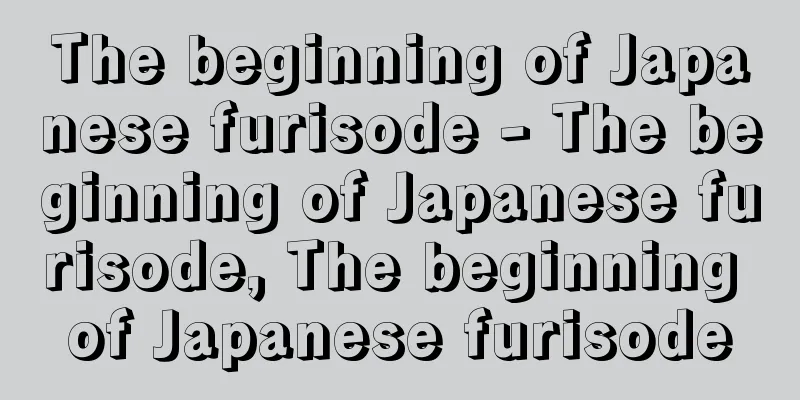Chemical fiber industry

|
The chemical fiber industry consists of the cellulosic chemical fiber industry, which uses cotton linters (short cotton fibers) and wood pulp as raw materials, and the synthetic fiber industry, which uses petroleum as raw materials.The main process is to turn natural thread-like polymers or synthetic polymers into fibers.Therefore, a major feature of the chemical fiber industry is that it has both chemical and textile industrial characteristics. This industry started with cellulose-based chemical fibers such as rayon, spunbond fiber (staple fiber) and acetate, but with the development of the petrochemical industry, both in Japan and around the world, the production of synthetic fibers came to dominate. The synthetic fiber industry requires advanced technology, huge equipment and facilities, and large amounts of capital to produce the raw polymer substances, and production is carried out in an oligopolistic manner by large capital backed by financial capital. Japan's chemical fiber industry was founded in the midst of World War I. In 1915 (Taisho 4), Suzuki Shoten, a newly emerging zaibatsu, established Azuma Leather Co., Ltd. Artificial Silk Thread Manufacturing Company (which became Teikoku Artificial Silk Thread in 1918), and later, Nihon Nitrogen Fertilizer (now Chisso) also established Asahi Silk Weaving Company (now Asahi Kasei) and began manufacturing regenerated cellulose fiber cupra (brand name "Bemberg"). In 1926, Toyo Rayon (now Toray), Kurashiki Silk Weaving Company (which became Kurashiki Rayon in 1949), Nippon Rayon (now Unitika), and Showa Rayon (now Toyobo) established factories, and Japan's rayon production grew phenomenally, becoming second in the world after the United States in 1932 (Showa 7), and first in 1937. At this time, research into organic synthetic chemistry was progressing in Europe and the United States, and the industrial production of nylon began in the United States by DuPont in 1938. Stimulated by this news, research was also carried out in Japan, with the Sakurada Laboratory at Kyoto University on vinylon, Toyo Rayon on nylon, and the Hoshino Laboratory at the Tokyo Institute of Technology on polyurethane synthetic fibers, and although some success was achieved, industrial development did not occur as the war intensified. After World War II, the rayon and staple fiber industries played an important role in the reconstruction of the chemical industry, but then synthetic fibers made their full appearance and the chemical fiber industry became part of the petrochemical industry. In 1950, Toyo Rayon, continuing research from before the war, commercialized nylon, and Kurashiki Rayon (now Kuraray) commercialized vinylon. In the 1950s, with the rise of the petrochemical industry, Toyo Rayon and Teijin (formerly Teikoku Rayon) commercialized polyester fibers, while Nippon Exlan Industries and Asahi Kasei commercialized acrylic fibers based on technology introduced, and production of these synthetic fibers increased rapidly with the entry of new companies. Despite overproduction and the reorganization and restructuring of companies, by 1973 synthetic fibers accounted for half of all textile production, and Japan's production volume was the second highest in the world after the United States. A major feature of the large-scale chemicalization of Japan's textile industry is that it is centered around textile capital. In Europe and the United States, the opposite is true, with chemical capital developing and producing synthetic fibers. It is said that the accumulation of research by Japanese textile capital since before World War II, and its advantageous position in terms of technology and funds, were the reasons why textile capital surpassed chemical capital in the synthetic fiber industry. The 1970s saw the emergence of new materials and new fiber products that have since developed significantly. One of these is carbon fiber. In 1971, Toray began production of the polyacrylonitrile (PAN)-based "TORAYCA," and in 1975, Toho Rayon (now Toho Tenax) began mass production of the similar "BESFIGHT" (later inherited by Teijin). Carbon fiber is a highly functional material with excellent light weight, high strength, and heat resistance, and has greatly shed the traditional image of fibers as a clothing material. It has come to be widely used in aerospace, sports goods, civil engineering, construction, general industrial applications, and more, with "TORAYCA" being adopted as a structural material for Boeing's Boeing 777 (1990). As a result, the production value of carbon fiber has grown rapidly, and Toray has become the world's largest producer of PAN-based carbon fiber. In addition to carbon fiber, artificial leather and nonwoven fabrics have also appeared. Artificial leathers such as Kuraray's "Clarino," Toray's "Exaine," Teijin's "Cordley," and Asahi Kasei's "Lamus" are made from ultra-fine fibers such as polyester. Artificial leather has expanded its range of applications beyond clothing to include interior goods, shoes, automobiles, and sporting goods, while nonwoven fabrics have also expanded their uses to filters, medical supplies, and electronics. With the development of advanced technology, mainly electronics, in the 1980s and 1990s, textile manufacturers promoted product diversification and transitioned from mass production bases of textile materials for clothing to comprehensive engineering companies that respond to demand from the field of advanced technology and provide high-performance materials in a multifaceted manner. Looking ahead to the 21st century, these companies have transformed into companies that comprehensively manage various departments, such as textiles, resins, chemical products, medical equipment, information-related equipment, mechanical engineering, various functional materials, environmental equipment, and research and development. In addition, as environmental problems become more serious, biodegradable fibers have become a new focus of attention. Examples include Kanebo's "Lactron," a fiber made from corn, and Asahi Kasei's "Cupro Cellulose Fiber." It is expected that this transition to soft chemistry, which does not rely on petrochemistry but uses natural material synthesis processes, will accelerate in the future. In the 21st century, as China's economic development became more prominent, cheap synthetic fiber raw materials began to be imported in large quantities from China, and domestic textile manufacturers' production began to shrink across the board. Textile manufacturers such as Toray, Teijin, and Kuraray have shifted the focus of production from clothing to aircraft-related, automotive-related, electronic materials-related, and environmental-related products, and have also begun to utilize nanotechnology and biotechnology to develop and produce new products such as nanofibers, nano-laminate films, nano-alloy resins, biofuels, biofibers, and bioplastics. Technological development is active in this field, and the market is expected to expand with the emergence of new products. Synthetic fibers were developed as substitutes for natural fibers such as silk, cotton, and wool, and were mainly brought to Japan by Western companies, including polyamide fibers, polyester fibers, and acrylic fibers, based on polymer chemistry and organic synthetic chemistry. Japanese manufacturers also grew to mass-produce these synthetic fibers, and this can be seen as a major shift from imitation to creation. This change involves more than simply the diversification and integration of production, and is also related to a qualitative transformation of Japan's chemical industry as a whole. Behind this change are collaborations with new fields such as microelectronics and electronic technology, the application of new technologies such as nanotechnology and biotechnology, and the development of unique Japanese technologies. [Masataka Baba] [Reference items] | | | | | | | | | Industries, Inc. |Source: Shogakukan Encyclopedia Nipponica About Encyclopedia Nipponica Information | Legend |
|
化学繊維工業には、木綿リンター(綿花の短繊維)や木材パルプを原料とするセルロース系化学繊維工業と、石油を原料とする合成繊維工業とがあり、天然の糸状高分子または合成高分子を繊維状にすることが工程の中心である。したがって、化学工業的性格と繊維工業的性格をあわせもっているのが大きな特色である。 この工業は、人絹、スフ(ステープルファイバー)、アセテートなどのセルロース系化学繊維によって開始されたが、世界的にも、日本においても、石油化学工業の発展とともに、合成繊維の製造が中心をなすに至った。合成繊維工業では、原料高分子物質をつくるために高度な技術、巨大な装置・設備、大きな資本が必要であり、生産は金融資本を背景にした大資本によって寡占的に行われている。 日本の化学繊維工業は第一次世界大戦のさなかにおこった。1915年(大正4)に新興財閥の鈴木商店が東(あずま)レザー株式会社人造絹糸製造所(1918年帝国人造絹糸になる)を発足させ、その後、日本窒素肥料(現、チッソ)も旭絹織(あさひけんしょく)(現、旭化成)を設立して再生セルロース繊維キュプラ(商品名「ベンベルグ」)の製造に着手した。1926年には、東洋レーヨン(現、東レ)、倉敷絹織(1949年倉敷レイヨンになる)、日本レイヨン(現、ユニチカ)、昭和レーヨン(現、東洋紡)が工場を設立し、日本の人絹生産は、1932年(昭和7)にはアメリカに次いで世界第2位に、また1937年には第1位になる驚異的な成長を遂げた。 このころ欧米では有機合成化学の研究が進み、1938年にはアメリカのデュポン社によってナイロンの工業化が開始された。このニュースに刺激されて、日本でも京都大学桜田研究室でビニロン、東洋レーヨンでナイロン、東京工業大学星野研究室でポリウレタン系合成繊維の研究が行われ、一定の成果をあげたが、戦争の激化とともに工業的には発展しなかった。 第二次世界大戦後、人絹、スフ工業は化学工業の再建の重要な一翼となったが、やがて合成繊維が本格的に登場し、化学繊維工業は石油化学工業の一部に組み込まれるようになった。 1950年(昭和25)に、戦前からの研究を受け継いで東洋レーヨンがナイロンを企業化し、倉敷レイヨン(現、クラレ)がビニロンを企業化した。昭和30年代に入り石油化学工業の勃興(ぼっこう)とともに東洋レーヨン、帝人(帝国人造絹糸が改称)がポリエステル繊維を、日本エクスラン工業、旭化成などがアクリル繊維を、技術導入を基に企業化し、これら合成繊維はその後新企業の参入もあって急激に生産の増加を遂げた。そして、生産過剰、企業の系列化・再編成を経ながらも1973年には合成繊維は全繊維生産の半分を占め、またアメリカに次いで世界第2位の生産高をあげるに至った。日本の繊維工業の大幅な化学化は、繊維資本が中心になっていることが大きな特徴である。欧米ではこの逆であって、化学資本が合成繊維を開発し、生産している。日本の繊維資本の、第二次世界大戦前からの研究の蓄積、技術や資金での有利な立場が、合成繊維工業において、繊維資本が化学資本を凌駕(りょうが)した要因であるといわれている。 1970年代にはその後大きく発展した新素材や新繊維製品の登場がみられた。その一つが炭素繊維である。1971年に東レがポリアクリロニトリル(PAN)系の「トレカ」の生産を、1975年に東邦レーヨン(現、東邦テナックス)が同系の「ベスファイト」(その後、帝人に受け継がれる)の量産を開始した。炭素繊維は、軽量、高強度、耐熱性に優れるなど高機能素材であり、従来の、繊維は衣服材料というイメージを大きく脱し、「トレカ」がボーイング社のボーイング777の構造材に採用される(1990年)など、航空宇宙、スポーツ用品、土木建築、一般工業用などに幅広く利用されるようになっていく。その結果、炭素繊維の生産額は急伸長を遂げ、東レは世界最大のPAN系炭素繊維生産会社となる。炭素繊維のほか、人工皮革や不織布の出現もあった。クラレの「クラリーノ」、東レの「エクセーヌ」、帝人の「コードレ」、旭化成の「ラムース」などの人工皮革はポリエステルなどの超極細繊維を用いてつくられた。人工皮革は衣料としてだけでなく、インテリア、靴、自動車、スポーツ用品などに応用範囲を広げ、また不織布もフィルター、医療用品、エレクトロニクスなどに用途が広がっていった。 1980年代、1990年代のエレクトロニクスを中心とした高度技術の展開とともに、繊維メーカーは製品の多角化を推進し、衣服用の繊維素材の量産拠点から、高度技術分野からの需要に対応し、高機能素材を多面的に提供する総合エンジニアリング企業への転換を進めていった。21世紀を展望するなかで、これらの企業は繊維、樹脂、化成品、医療用機器、情報関連機材、機械エンジニアリング、諸機能材料、環境関連機器、研究開発等の諸部門を総合的に運営する企業へと変貌を遂げている。また、環境問題が深刻化するなかで新たに生分解性繊維が注目されるようになった。カネボウが開発したトウモロコシを利用した繊維「ラクトロン」、旭化成の「セルロースキュプラ繊維」などがそれである。このような、石油化学に依存せず、自然な物質合成過程を利用するソフト化学への転換は将来加速することが予想される。 21世紀に入り、中国の経済発展が顕著になると中国からの安価な合成繊維原料が大量に輸入されるようになり、国内の繊維メーカーの生産は軒並み縮小傾向が目だつようになった。東レや帝人、クラレ等の繊維メーカーは生産の重点を衣料品から航空機関連、自動車関連、電子材料関連、環境関連などへシフトさせ、また、ナノテクノロジー、バイオテクノロジーを駆使してナノファイバー、ナノ積層フィルム、ナノアロイ樹脂、バイオ燃料、バイオ繊維、バイオプラスティクスなどの新製品を開発・生産するようになった。この分野は技術開発が盛んに行われており、新製品の登場による市場の拡大が期待される。 合成繊維は絹、木綿、羊毛などの天然繊維の代替品として開発され、高分子化学や有機合成化学をベースに、ポリアミド系繊維、ポリエステル系繊維、アクリル系繊維など、おもなものは欧米の企業によりもたらされた。日本のメーカーもこれら合成繊維の大量生産を行う企業として成長したが、ここに至って「模倣から創造へ」の大きな転換が起こったとみることができる。この変化は単に生産の多角化、総合化という言葉以上の内容を含んでおり、日本の化学工業全体の質的転換とも関係している。この変化の背景にあるのはマイクロエレクトロニクス、電子技術という新分野との連携、ナノテク、バイオなどの新技術の応用、日本独自の技術の開発などがある。 [馬場政孝] [参照項目] | | | | | | | | | |出典 小学館 日本大百科全書(ニッポニカ)日本大百科全書(ニッポニカ)について 情報 | 凡例 |
Recommend
Mr. Ta - King
A clan active in ancient Japan. The character Ta c...
Esparto
Also known as alfasou. A wild grass of the grass f...
Huttenmeister (English spelling)
…In late medieval Germany, a guild of craftsmen, ...
Tetsujiro Inoue
A philosopher of the Meiji and Taisho periods. Bo...
Pavement - hoso (English spelling)
A road surface structure that has been treated to...
Genus: Ooyashirisuzu
…They build nests in trees using bark and other f...
Water transport - Suiun
Transporting people and cargo by boat or raft usi...
Tucuman, SMde (English spelling)
…The capital of the province of the same name in ...
"Anekantajaya Patakha" - Anekantajaya Patakha
…Furthermore, he was extremely knowledgeable abou...
Diceros bicornis (English spelling) Diceros bicornis
…Once widespread throughout Southeast Asia, but n...
Ubadake
…A mountain located in the northern part of the K...
Hidefumi - Sufficiency
Year of birth: Year of birth and death unknown. He...
Faction - Batsu
A private group of people with the same political...
Matsudaira Masatsuna
Year of death: 6/22/1648 (8/10/1648) Year of birth...
Heparin - Heparin (English spelling)
A type of polysaccharide with a strong anticoagul...







![Gobo [city] - burdock](/upload/images/67cb9a40d83b0.webp)

